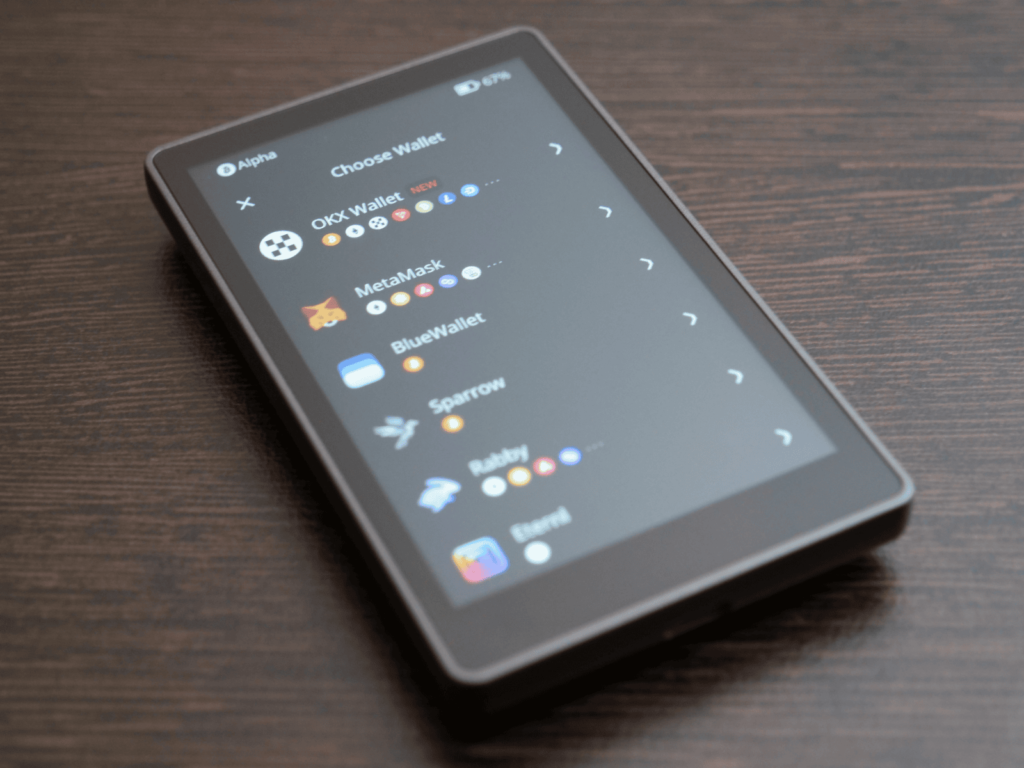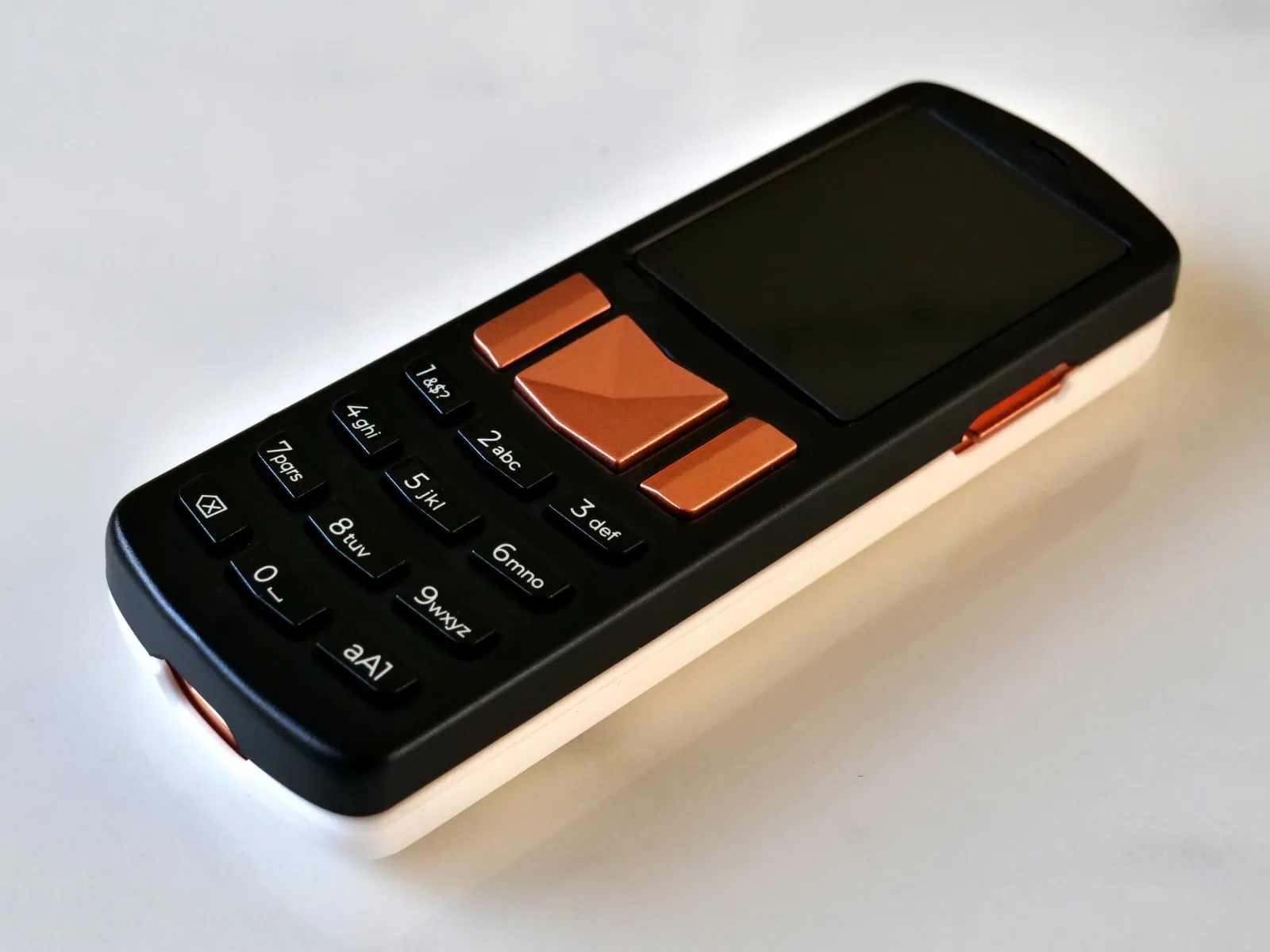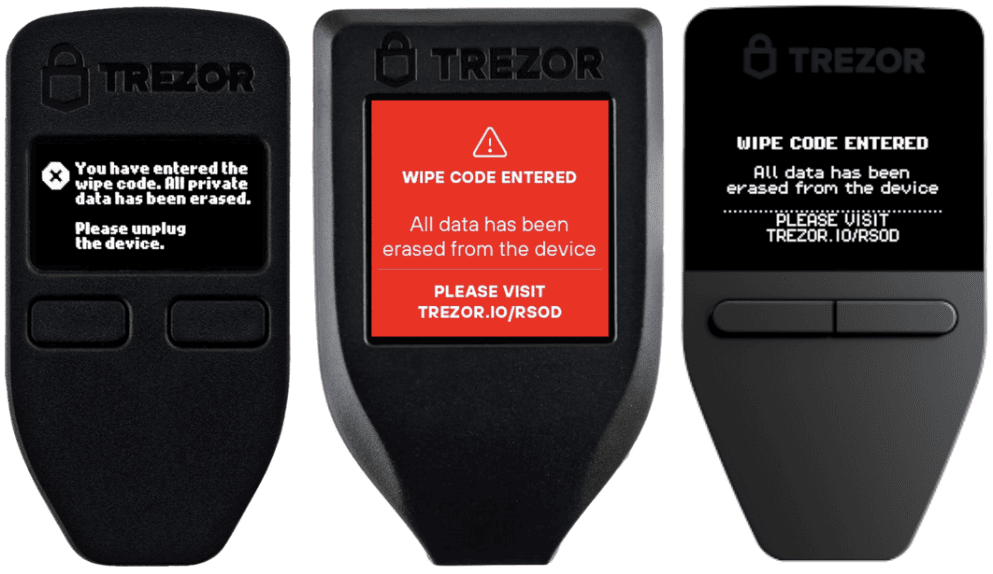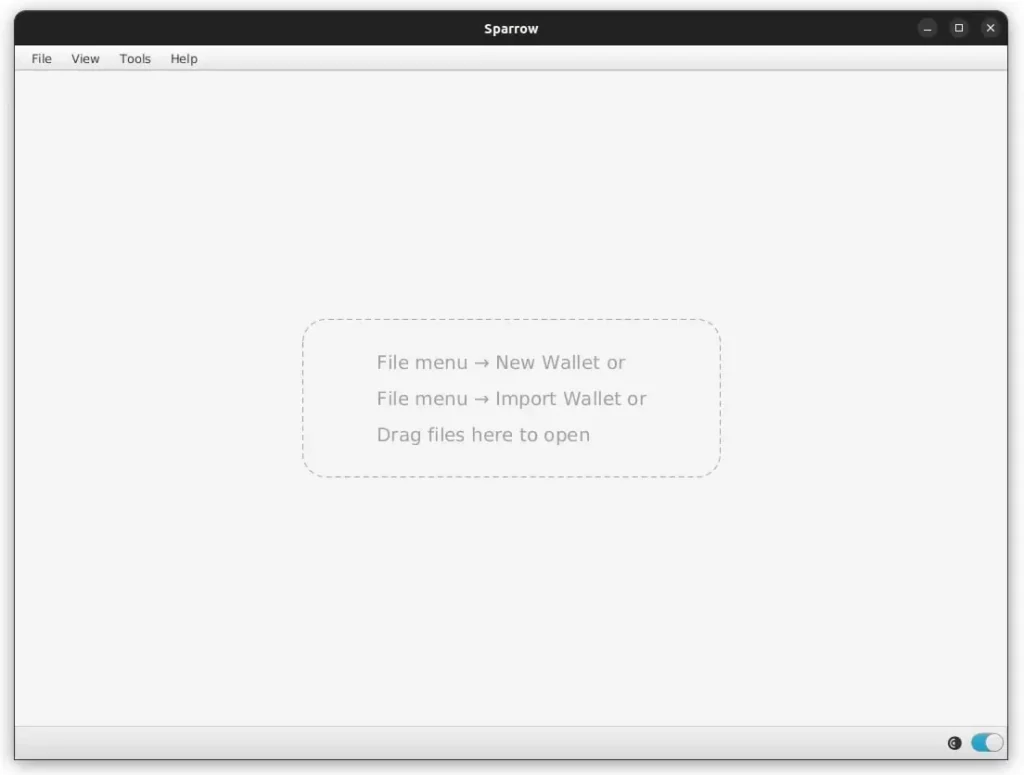In a time where your entire crypto world can disappear with a single keystroke, it makes a lot of sense to learn about and use a good Cold Wallet. This silent protector operates beyond the reach of virtually all cyber thieves or digital malware, ensuring that your digital assets are always safe.
Contents
What Is A Cold Wallet?
A Cold Wallet is any wallet that has its Private Keys stored offline or in a way where they’re not connected to the Internet. Cold wallets are far safer than hot wallets (which are connected to the Internet) and provide excellent protection from hackers and other online threats.
The most common cold wallets are called Hardware Wallets, which are a separate, physical device that’s used to generate, store and manage your private keys entirely offline. They can take many forms including looking like USB drives, small calculators, credit cards or small smartphones. In summary:
- Cold wallets store your private key offline, while hot wallets store them online
- Cold wallets are more secure where as hot wallets are less secure, but more convenient
Why Should You Use Cold Wallets?

The main reason to use a cold wallet is for the increased security and protection of your digital assets. With Bitcoin this all comes down to protecting your private key, also commonly referred to as a seed phrase or mnemonic sentence.
Your private keys are what allows you to spend your funds, so if someone hacks you and can gain access to them, then all your funds will also be stolen. Cold wallets take this extremely sensitive private key data and store it offline, away from any malware infected or compromised computer systems such as your laptop or phone. This makes it almost impossible for hackers to steal it.
>> Deeper Dive: What Are Public And Private Keys?
Cold wallets are perfect for safely storing cryptocurrencies in long term storage and are what we recommend all readers use for any funds that they don’t want to lose access to.
How Does A Cold Wallet Work?
While there are other types of cold storage wallets, such as a paper wallet, the most recommended and secure is a dedicated hardware wallet. This is a secure physical device that works by connecting to your software wallet and performing three primary responsibilities:
- Securely generate your cryptographic keys with true randomness
- Securely store your cryptographic keys to protect them against hackers and physical attacks
- Display and sign transactions with your private keys while keeping them safe and offline
Hardware wallets achieve this thanks to specially designed hardware that can properly generate true randomness when generating your cryptographic keys. This hardware is usually a True Random Number Generator (TRNG).
Most also then store your cryptographic keys in a Secure Element chip, which acts like a digital bank vault. These special chips are built to withstand sophisticated, in person physical attacks such as attackers injecting weird voltages into them or even delidding the chip with lasers

This extra physical security, combined with the fact that your private key is never connected via the Internet, hugely reduces the risk of an attacker stealing your digital assets. Hardware wallets also usually offer a screen and user friendly interface so you can interact with it and link it to the software wallet on your computer or phone via a companion app.
We recommend thinking of hardware wallets as “Key Managers” as this more accurately reflects what they truly do in practice. They generate, store and manage your cryptographic keys. This is similar to how a Password Manager is responsible for generating, storing and managing your passwords.
New to Athena Alpha? Start today!
Top 5 Crypto Wallets
Some of our top recommendations include the BitBox02, Foundation Passport, COLDCARD Mk4, Blockstream Jade, Keystone 3 Pro or SeedSigner. You can see how they stack up against each other below as we review and rate all of the most well known crypto wallets.
Note: We do not recommend any Ledger devices as they do not meet our privacy or security standards. We know they’re a very popular option, especially for beginners, but they are not a good solution.
Hardware wallets cost anywhere from $60-$200 USD. This is also a one time cost that is highly recommended if you’re storing medium to large amounts of bitcoin.
Can Crypto Be Seized From Cold Storage?
While it’s trivial for funds in an online wallet to be seized, for example crypto assets stored on Coinbase or Kraken, seizing them from a cold wallet is virtually impossible. As the private keys are stored in an offline wallet, the attackers would have to be in physical possession of it to seize the funds.
Even then, most hardware wallets, like the Trezor Model T or ones listed above, have a PIN code protecting them. This means to get access to your funds, they’d then also have to somehow know or guess that PIN code or convince you to give it up.

How Do I Get Crypto Out Of Cold Storage?
In order to withdraw your funds from a cold storage wallet, you usually have to send the unsigned transaction to the hardware wallet device first. This is done either via USB cable, QR code, microSD card or even NFC in some newer devices and doesn’t require an internet connection.
The hardware wallet then signs the transaction offline, using your private keys and then sends the signed transaction back to your computer or phone which then broadcasts it to the Bitcoin Network for processing. While this process takes longer than on a hot wallet, it adds an extra layer of security that makes it almost impossible for online attacks to get past.
What Are The Disadvantages Of A Cold Wallet?
The main disadvantage of using a cold wallet is that it takes longer and is more cumbersome to send your funds. This is because you must locate and retrieve your hardware wallet device, connect it to your software wallet and use it to sign the transaction with the private keys that are stored on the hardware wallet.
As with most security, the higher it is, the more it effects the user experience. As you’re getting maximum security for your coins and tokens, it also comes with more friction. For most this is an acceptable trade off as they don’t spend funds from their cold wallet very often. It’s like a long term savings account that you only ever send funds to, not take funds from.

Other disadvantages include that the workflow of receiving and sending bitcoin is slightly more complicated to do, that cold wallets usually cost money and that they need to be stored in a safe place and be taken care of properly over the years with Hardware Wallet Routine Maintenance just like any piece of technology.
Other Types Of Bitcoin Wallets
Beyond just hot and cold wallets, there are a number of other wallet types out there:
- Mobile Wallet: A wallet that runs exclusively on your phone. They can be custodial or non-custodial and even integrate with a hardware wallet device via USB or Bluetooth for added security. Some examples include Electrum, Nunchuk and BlueWallet
- Browser Extension Wallet: A wallet that runs exclusively in a web browser extension program. They can be custodial or non-custodial but are usually non-custodial and don’t use hardware wallet protection. As the private keys are kept in the software, they are highly vulnerable to malware or hackers. It is recommended not to keep a large amount of funds in browser extension wallets.
- Exchange / Web Wallet: A wallet that runs in a website, similar to how a bank runs your bank account. These are usually custodian and don’t use hardware wallet protection. They also introduce third parties (the ones that own the website / exchange) and thus bring even more risks. It is recommended not to keep any amount of funds in exchange or web wallets. Some examples include Coinbase, Binance, Blockchain and BitGo
- Desktop Wallets: A wallet that runs exclusively on your desktop computer. They can be custodial or non-custodial and even integrate with a hardware wallet device via USB or Bluetooth for added security. Some examples include Sparrow, Electrum and Specter.
- Multisig Wallet: A wallet that can only spend the funds when multiple private keys are used together, instead of a single key, avoiding a single point of failure. These private keys can be spread across multiple software and/or hardware wallets, each with their own single private key. They are usually non-custodial, but there are some services which can take custody of one of the multiple private keys for additional security called multicustodial wallets. They are the most advanced wallet type and introduce a few extra complexities in order to increase the security. For example a 2-of-3 multisig wallet might have your private keys spread across three separate hardware wallet devices. Any two are required to move the money but the loss of any one does not result in loss of money.
What To Consider When Picking A Bitcoin Wallet
As you can imagine, with the number of wallet options, features and preferences things gets pretty complicated fast. Should you use a single signature or multisignature setup? Which hardware crypto wallet device should you buy? Do you even need one at all?
To begin with, we strongly recommend downloading and installing Sparrow Wallet. It’s completely free and our guide has a full run down of how to install it, set it up, how to create your first wallet, spend and more.
>> Learn More: Sparrow Wallet Ultimate Quick Start Guide
The good news is that there’s a lot of really good standardization and support for things across most wallets. For example Sparrow Wallet allows you to create software wallets or you can create a hardware crypto wallet using any number of supported 3rd party hardware wallet devices such as BitBox, COLDCARD or SeedSigner.

When choosing your Bitcoin wallet try to make sure it’s:
- Non-Custodian: Make sure you always have full control of your private keys
- Reputable: Make sure you fully research and vet the wallets reputation and history. There have been many cases of malware disguised as wallets that steal your bitcoins (especially on mobile App stores), so do your research carefully before deciding which one to use and trust. This also goes for any hardware crypto wallet devices you use
- Standardized: Make sure it supports the BIP-0039 standard and is generally not proprietary. Ideally you want it to be open source software that has been vetted by trusted security audits and the bitcoin community over many years
- Verifiable: Make sure it allows you to verify the signature of the manifest files with PGP keys as well as a shasum to confirm the authenticity of the binaries. This ensures that the software files you’re downloading are actually from the developers and haven’t been secretly replaced by hackers. An example of this info can be seen here and we go through the full process in our install guides
- Backup: Make sure it has robust backup and restore capabilities built into it
There are many more features that wallets have such as fee control, Coin Control, password protection, Tor and Full Node connectivity and more. We will be covering all of this in future pieces so stay tuned!
FAQ
Are Cold Wallets 100% Safe?
While cold wallets are virtually impossible to breach, nothing is ever 100% safe. The main way people lose their funds whilst using a hardware wallet is by their own mistakes, such as forgetting the password or not creating a backup seed recovery card and then either losing the device or it getting damaged.
Which Is Better Hot Wallet Or Cold Wallet?
Cold wallets are generally considered far safer than hot wallets. This is because a cold wallet stores your private keys offline giving them additional protection. This keeps your crypto safe and ensures it’s protected against the many online security threats that are out there such as hackers, malware and other threats.
Do I Really Need A Cold Storage Wallet?
If you don’t want to lose your funds, yes. Having your funds and the private keys that secure them connected to the Internet is one of the top ways people lose their bitcoin. If you have any funds that you don’t want to lose, make it a top priority to pick and purchase a hardware wallet as soon as possible so you remain safe.
How Do You Store A Cold Wallet?
It’s best to store your hardware wallet in a safe, dry place that doesn’t have any moisture or severe temperature fluctuations. Top recommended places include a fireproof and waterproof safe or a secure drawer within your home. It’s also a good idea to keep it out of sight to avoid attracting unwanted attention. Also remember to store your hardware wallet and its recovery seed backup in different physical locations.
Is Coinbase A Cold Wallet?
No. Coinbase is what’s referred to as an exchange or web hosted wallet and is entirely online. If you have any funds on an exchange we recommend taking full self custody of them immediately, as exchanges have a long track record of going bankrupt and losing their customers funds.



